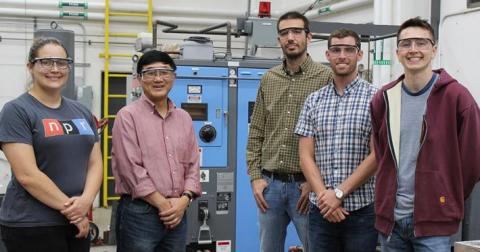A team led by Materials Science and Engineering Professor Alan Luo began work this summer on two recycling efficiency projects funded by the Reducing EMbodied-Energy And Decreasing Emissions (REMADE) Institute.
According to The Aluminum Association, nearly 40 percent of the North American aluminum supply is now created through secondary production, up around 10 percent since the early 1990s. Recycling aluminum saves more than 90 percent of the energy that would be needed to create a comparable amount of the metal from raw materials.

Ohio State researchers will partner with Alcoa and the North American Die Casting Assocation in efforts to increase melt efficiency and secondary alloy usage in aluminum die casting. The casting industry uses limited quantities of secondary alloys because of their poor quality due to high concentrations of residual contaminants such as iron. In this project, thermodynamic and kinetic models coupled with experimental validation and testing will be used to develop contaminant control techniques including alloy, flux, and refractory chemistries to increase melt efficiencies with increased utilization of secondary materials. REMADE Institute is providing $425,000 to support the research.
The second project focuses on development of cost-effective removal of trace contaminants in recycled metals. Luo's team will collaborate with Alcoa and Computherm to experimentally evaluate the addition of “scoping” elements in molten aluminum to neutralize trace contaminants that would otherwise constrain recycling. According to Luo, cost-effective technologies for the in-melt removal or neutralization of trace contaminants in metals is critical for secondary feedstocks to achieve cost parity with primary feedstocks. Ohio State and its partners will receive $100,000 from REMADE Institute to complete this work.

